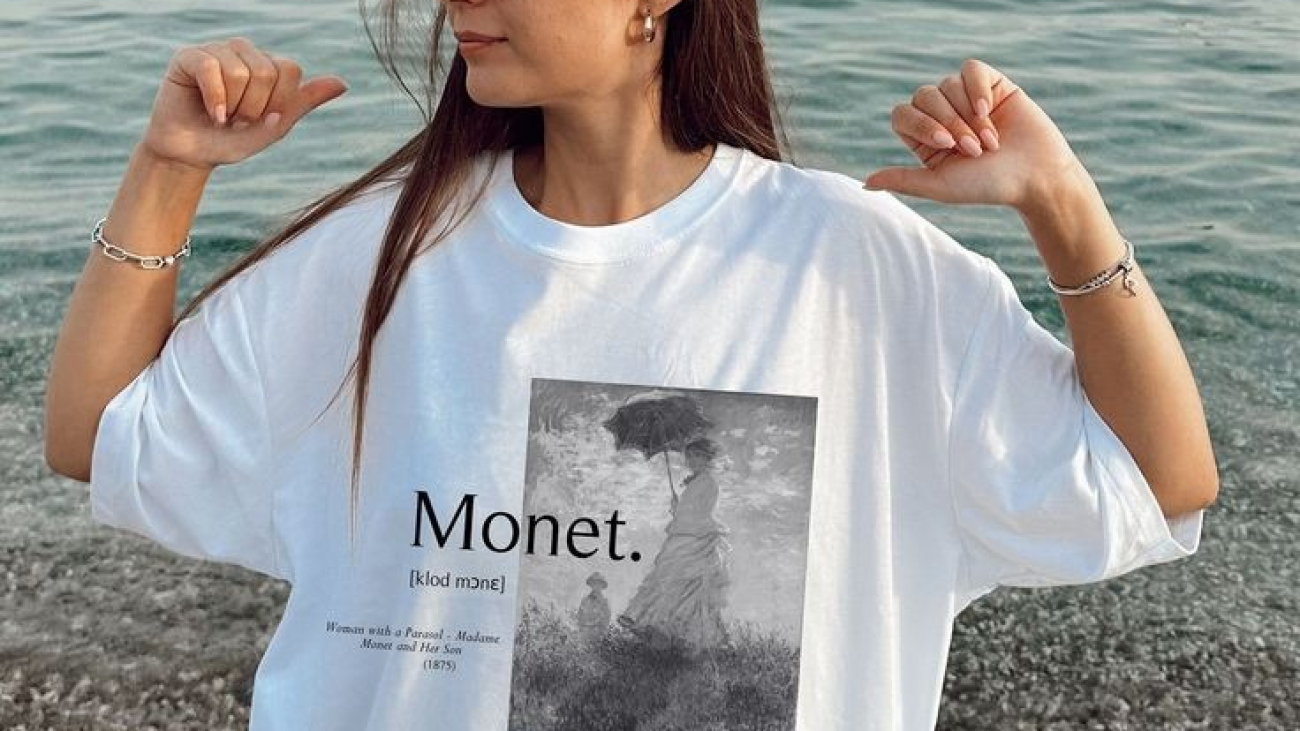Introduction
The T-shirt occupies a singular position in the global wardrobe, seamlessly blending utility, identity, and innovation into a deceptively simple garment. Once relegated to the realm of undergarments and manual labor attire, it has transcended its humble origins to become a canvas for creativity, a vector for cultural messaging, and a bellwether of technological advancement. This analysis delves into the multifaceted world of the T-shirt, surveying its historical evolution, material science, design sophistication, market dynamics, cultural resonance, sustainability imperatives, and future trajectories. By unpacking each dimension, we appreciate how this quintessential item continues to shape—and be shaped by—broader trends in fashion, technology, and society.
Historical Foundations and Social Adoption
The genesis of the T-shirt traces back to the late nineteenth century when industrial workers and military personnel sought lightweight, breathable garments to replace heavy woolen underlayers. Early mass production in the early twentieth century standardized the T-shirt’s cut and construction, yet it remained largely invisible beneath uniforms and outerwear. Social attitudes shifted dramatically in the mid-century as Hollywood stars and popular icons began wearing T-shirts in public, heralding a new era of casual dress. Film and television immortalized the image of the lone hero clad in a stark white shirt, while youth movements repurposed the garment as a badge of rebellion and self-expression. By the close of the century, the T-shirt had irreversibly cemented its place in daily life, its ubiquity underscoring a broader democratization of fashion.
Material Science and Textile Innovation
At the core of any T-shirt lies its fiber composition. Traditional cotton endures as the material of choice for its tactile softness, breathability, and natural absorbency. Advances in fiber processing have introduced organic and sustainably farmed cotton, reducing water consumption and chemical inputs. Synthetic fibers such as polyester and nylon, once relegated to athletic wear, have migrated into mainstream production via blended fabrics that offer enhanced durability, moisture management, and elasticity. Cutting-edge research explores bioengineered fibers derived from bacterial cellulose or algae, promising fully biodegradable alternatives without sacrificing performance. Meanwhile, finishes and treatments—antimicrobial coatings, UV-resistant dyes, and phase-change microcapsules—imbue the garment with additional functionality. Through this interplay of tradition and innovation, the T-shirt exemplifies how textiles can evolve to meet both aesthetic and pragmatic demands.
Advanced Patternmaking and Tailored Construction
Gone are the days when a T-shirt conformed uniformly to one generic silhouette. Modern patternmaking leverages three-dimensional body scanning and computer-aided design to produce personalized fits that accommodate diverse physiques. Seamless knitting machines can fabricate an entire shirt in a single piece, reducing stitch lines and maximizing comfort. Innovative cut-and-sew techniques introduce raglan sleeves for unencumbered motion, ergonomic shoulder panels for improved posture, and strategic side vents for enhanced airflow. Hemlines vary from cropped to extended, enabling stylistic shifts from streetwear to business-casual. Collar constructions range from classic rib-knit to bonded finishes that resist stretching. Collectively, these refinements signal a maturation of the T-shirt from mass-produced commodity to considered fashion object.
Aesthetic Language and Graphic Expression
The T-shirt’s potential as a communicative substrate has never been more pronounced. High-definition digital printing allows photographic imagery, gradient color transitions, and sharply detailed logos to appear on fabric with unprecedented clarity. Traditional screen printing, however, remains prized for its color opacity and tactile ink density. Substrates now accommodate reactive dyes, pigment inks, and water-based formulations, each delivering distinct aesthetic and handfeel qualities. Creative directors collaborate with graphic artists to conceive limited-edition drops, while open-source platforms enable individuals to design one-off pieces. The result is a democratization of visual culture, where political slogans, fine-art reproductions, and personal photographs all occupy the same mode of expression. In an era of instant virality, a single design can catalyze global conversation within hours of release.
Consumer Psychology and Cultural Dynamics
Wearing a T-shirt is an act of identity negotiation. Social psychologists observe that graphic elements influence onlookers’ perceptions of traits such as confidence, creativity, and social values. Sports jerseys foster group cohesion among fans, while slogan shirts activate beliefs that individuals wish to project. Subcultural movements—punk, skate, hip-hop—have historically co-opted the T-shirt as a uniform, signaling in-group membership and defiance of mainstream norms. In contrast, luxury brands have leveraged minimalist logo placements to convey exclusivity and status. The psychology of choice extends to retail environments: consumers gravitate toward tactile merchandising displays where fabric swatches and printed samples invite hands-on engagement. Insights into these behaviors guide marketing strategies, from limited-edition scarcity to collaborative influencer campaigns.
Supply Chain Transparency and Ethical Considerations
As the demand for T-shirts surges, so too does scrutiny of the processes that bring them to market. Global supply chains often span multiple continents, with raw cotton grown in one region, yarn spun in another, and final assembly taking place elsewhere. This complexity can obscure labor conditions and environmental impacts. In response, pioneering labels publish traceability reports that map each stage of production, from water usage metrics at ginning facilities to wage compliance at sewing workshops. Certifications such as Fair Trade, GOTS (Global Organic Textile Standard), and OEKO-TEX provide third-party validation of ethical and ecological performance. Concurrently, circular-economy initiatives aim to reclaim used garments for fiber regeneration, thereby decoupling growth from virgin resource extraction. These efforts reflect a broader shift toward responsible consumption and corporate accountability.
Market Segmentation and Retail Innovation
The T-shirt market encompasses a broad spectrum of price points and positioning—from sub-five-dollar basics to artisanal, handcrafted editions commanding premium rates. E-commerce platforms empower direct-to-consumer brands to circumvent traditional wholesale channels, leveraging data analytics to curate product assortments aligned with consumer preferences. Subscription models deliver rotating selections to subscribers’ doorsteps, marrying convenience with discovery. In brick-and-mortar contexts, experiential retail concepts integrate customization kiosks, interactive digital mirrors, and on-site printing studios. Pop-up activations enable brands to test new designs in localized markets before committing to full production runs. Such innovations not only differentiate offerings but also cultivate brand loyalty through participatory retail experiences.
Customization, Community, and Co-creation
Beyond styled collections, the T-shirt thrives as a vehicle for collaborative creation. From crowd-sourced design contests to real-time live-streamed printing events, communities rally around shared creative endeavors. Platforms enable multi-user editing of graphics, while augmented reality previews allow participants to virtually “try on” prototypes. Social media hashtags coalesce user-generated content, amplifying grassroots campaigns and turning customers into ambassadors. On the manufacturing side, modular printing technologies facilitate on-demand production, minimizing inventory risk and supporting micro-runs. These dynamics underscore a transition from passive consumption to active co-creation, redefining the relationship between maker and wearer.
Technological Horizons and Smart Textiles
The frontier of T-shirt development lies in the integration of technology at the fiber and garment level. Conductive yarns woven into fabrics can capture biometric data—heart rate, activity levels, skin temperature—and relay it to companion devices for health monitoring. Thermochromic inks respond to ambient or body heat, enabling garments that reveal hidden graphics or change hue in real time. Microencapsulated phase-change materials stabilize skin temperature by absorbing or releasing latent heat. Advanced knitting machines produce seamless, multi-density zones that offer targeted compression or ventilation. As 3D printing and laser-cutting techniques mature, bespoke structural features can be incorporated directly into intermediate layers. These innovations promise to elevate the T-shirt from passive apparel to active interface.
Sustainability Roadmap and Circular Strategies
A truly sustainable T-shirt transcends incremental improvements; it demands systemic rethinking of materials, manufacturing, distribution, and end-of-life management. Closed-loop recycling facilities are emerging that deconstruct blended fabrics into constituent fibers, enabling remanufacture without quality degradation. Bio-based dyes derived from food waste or microbial processes reduce dependence on petrochemicals. Waterless dyeing technologies and low-impact finishing methods curtail effluent discharge. Meanwhile, leasing and subscription models keep garments in circulation longer, mitigating obsolescence driven by fleeting trends. Transparent impact reporting tools quantify carbon footprints, guiding both corporate strategy and informed consumer choice. Through coordinated action across stakeholders, the T-shirt industry can pivot from linear depletion to regenerative stewardship.
Future Outlook: Convergence of Style, Identity, and Technology
Looking ahead, the T-shirt will continue to serve as a nexus where fashion sensibility, individual expression, and technological progress converge. Digital twins and blockchain credentials may authenticate limited-edition runs, while virtual try-on experiences in augmented reality could become ubiquitous in online retail. Custom-fit on-demand manufacturing may localize production, slashing lead times and reducing logistics emissions. Interactive textiles might foster novel forms of social engagement, enabling wearers to broadcast live data streams or participate in shared digital environments. At every turn, the enduring simplicity of the T-shirt—its universal cut and approachable form—will provide the ideal vessel for evolving aspirations, ensuring that this garment remains both timeless and timely.
Conclusion
The T-shirt exemplifies how a seemingly modest object can encapsulate vast narratives of culture, commerce, and innovation. Its journey from functional undergarment to sophisticated technology platform underscores the textile’s adaptability and resonance. By engaging deeply with material science, ethical sourcing, consumer psychology, and digital integration, stakeholders across the industry are reshaping the T-shirt into a beacon of contemporary design and sustainable practice. As the lines between fashion, technology, and personal identity blur, the T-shirt stands poised to retain its central role in wardrobes worldwide—ever simple in form, yet infinitely rich in meaning.

 Cart is empty
Cart is empty 